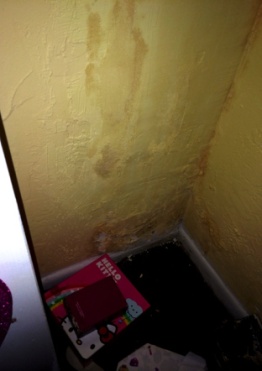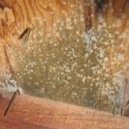Find a pre-screened local mold removal specialist Free Estimate
Find a Mold Specialist Now
Click or Call, Toll-Free 24/7
Water Leak In Wall
If you’ve ever had a water leak in wall, you know what a mess that can turn out to be. People often don’t find a water leak in a wall until it’s been leaking for a long time. As the drywall becomes saturated with water, the paint or wallpaper on the wall may begin to blister or peel. Eventually, a large section of your wall may need to be replaced.
Of course, if you have a water leak, you’ll be using more water than usual and you may notice that on your water bill. The Environmental Protection Agency says a family of four should not use more than 12,000 gallons per month in cold weather (you might use more in warm weather if you are watering your lawn), so if your bill indicates you’re using more than that, you should suspect a water leak.
Perhaps most concerning is the fact that mold may begin to grow inside your wall as a result of all the moisture in there. If you notice a musty odor in your home but don’t know where it’s coming from, there could be mold growing inside the walls or elsewhere. Mold produces gasses called microbial volatile organic compounds (MVOC), many of which have a musty smell. If your home smells musty, you should suspect mold and inspect your home carefully. Mold often grows in places where you can’t easily see it, like inside walls and under carpet.
How to Find a Water Leak
A simple way to find out if you have a water leak somewhere is to check your water meter, then wait two hours without using any water anywhere in the house (that means no flushing toilets during that time), then check the meter again. If it’s moved at all during that time, you probably have a leak somewhere.
Of course, that doesn’t tell you where the water leak is located. It just tells you that there is a leak somewhere and you need to find it. Check the likely locations, such as under sinks, behind toilets and around your washing machine and dishwasher. If you can’t find a leak anywhere, you’ll need to contact a plumber for assistance.
Dealing with Water Leak in Wall
Dealing with a water leak in a wall is usually a pretty big task. Drywall needs to be removed in order to get to the leak to repair it. If water has been leaking inside the wall for a while (which is usually the case, since water leaks in walls usually aren’t apparent for a while), a large area of drywall and insulation may be wet. Those materials cannot be adequately cleaned and dried, so they must be removed and replaced. You’ll probably need to have a plumber repair the leak, then have someone else come in to repair the drywall.
Before you replace the drywall, you need to do two things. First, repeat the simple check of your water meter that you did earlier. Check the meter, make sure you don’t use any water for two hours, then check the meter again. Make sure nothing is leaking before you put up new drywall.
The second thing you need to do is remove any mold that’s developed inside the wall before you put up new drywall. A water leak in wall frequently causes some mold to grow because the leak usually goes on for quite a while before you discover it. You need to be absolutely sure there is no mold in there before putting up the new drywall, because if you repair the wall with even a tiny bit of mold inside, that mold can grow and spread and you may not realize it until you’ve got a serious mold problem in your home. If you’re not certain that you’re mold-free, we recommend having someone come in to test for mold. On this page you can get a list of certified mold testers in your area.
Return From Water Leak In Wall To Our What To Do About Mold Page
Free Home Inspection By A Mold Removal Specialist
Search This Website
Recent Articles
-
See Our 5 Recommended Mold Removal Companies in Covington, KY
Apr 16, 25 12:59 PM
-
See Our 5 Recommended Mold Removal Companies in Wheaton, IL
Jun 20, 24 10:33 AM
-
See Our 5 Recommended Mold Removal Companies in Aberdeen, SD
Oct 08, 21 04:05 PM





